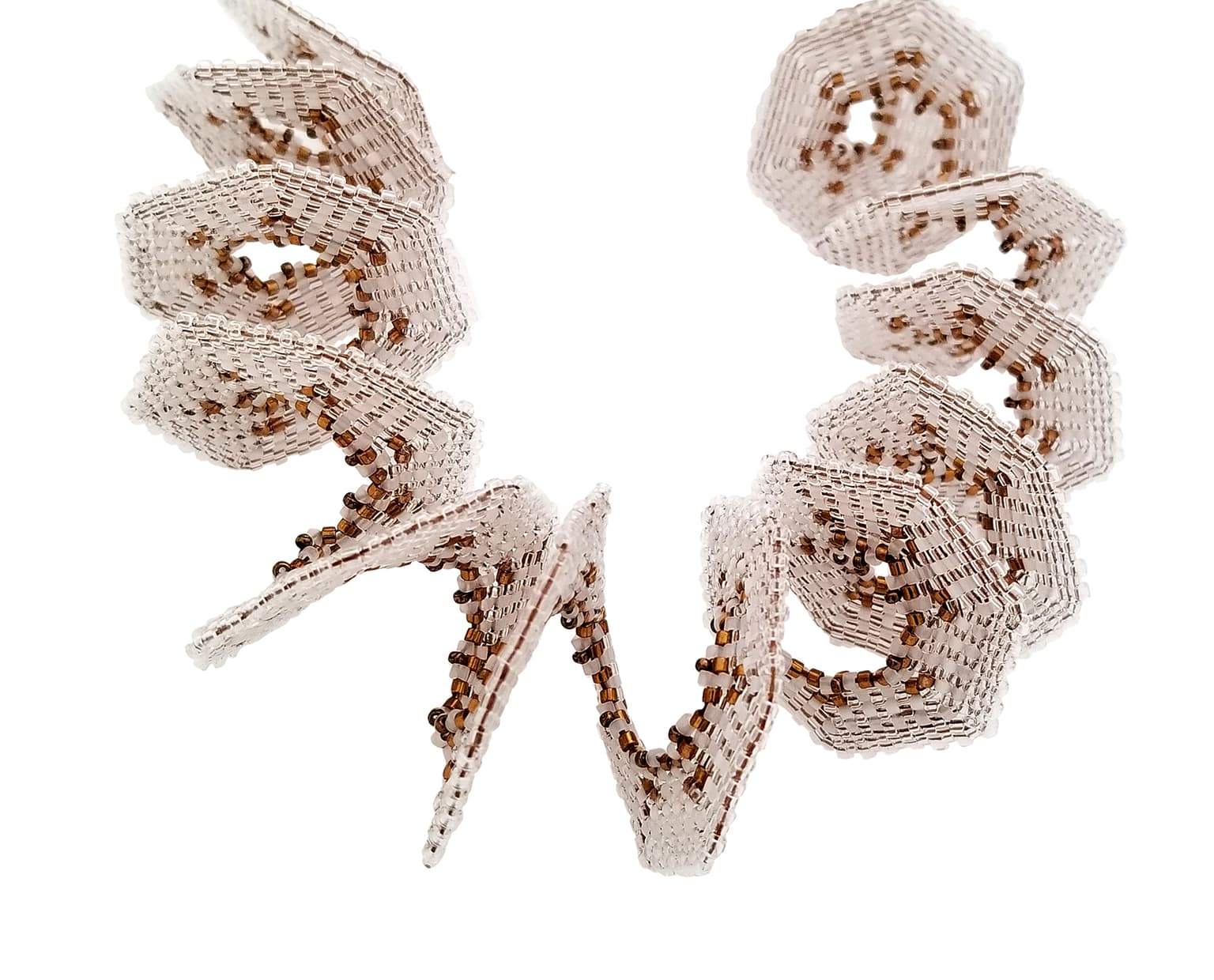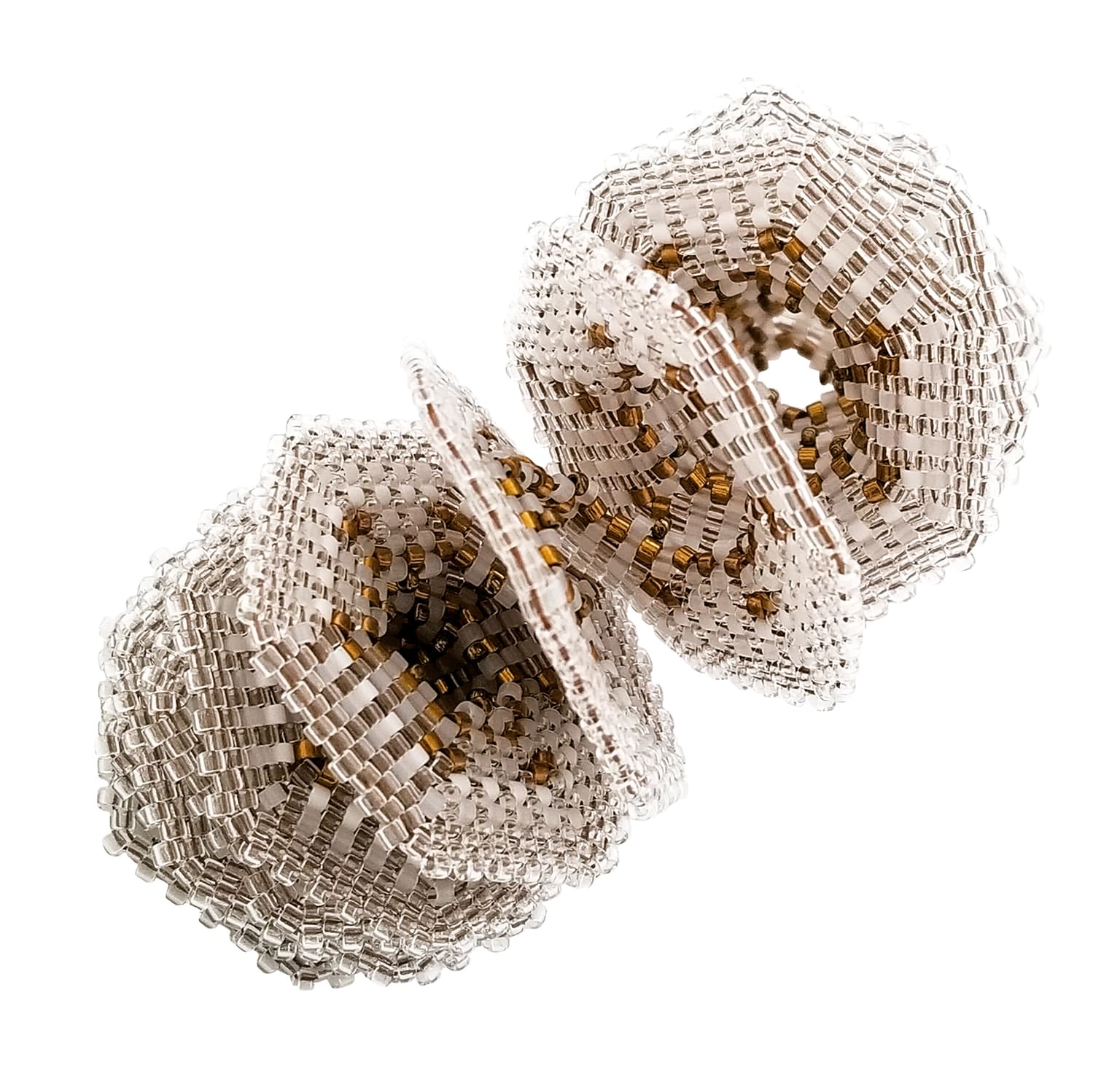2019 Bridges Conference Fashion Show
Contemporary Geometric Beadwork
Designers
Kate McKinnon
team leader
Contemporary Geometric Beadwork Team
Boston, Massachusetts, USA
Biography
Kate McKinnon leads the open-source Contemporary Geometric Beadwork team and is the author of and photographer for their series of books. The CGB team is comprised of beaders, researchers and solvers from all over the world who enjoy using precision beadwork not only to make art but to study and model mathematical ideas. Through these ideas, progressions and cycles we also explore our understanding of the natural world and the geometric constraints governing the distributions of material in the Universe from the atomic scale to the cosmic. We have representation from most fields of math and science on our team, and from architecture, education, the performing arts, the humanities, and all walks of life. CGB publishes books on our techniques and designs, and the team uses the proceeds to hold workshops and meetings and to attend conferences and exhibits. Through these open collaborations, we've been able to pool our questions to revolutionize the techniques, starts and stitches used to make this work. Also (and at a deeper level) we have come to understand the fundamental, shamanic nature of these ancient stitches. Beading stitches can also inform materials science. This was pointed out by Elisabetta Matsumoto, a member of the Bridges community, at a recent physics conference. In both media, we see the same looping progressions, cycles, and the use of increases and decreases to define geometry. The neat toothed gridwork created in beadwork also gives a precise architectural fabric from which to study how the dimensional world is driven by the arrangement of the smallest units. Each of the forms that we are presenting to this jury are built from precision sequences that determine the geometry of the architecture. You will see tessellations, triangles, tetrahedra, polygons folded and flat, hyperbolic paraboloids, and engineering linkages designed by the French mathematician Raoul Bricard (the Kaleidocycle, re-introduced in the 1970s by mathematician Doris Schattschneider, is one example of a Bricard Linkage). As it turns out, beading is one of the oldest pursuits of humans (and only humans do it) yet for hundreds of thousands of years the finished work simply sat flat on the table. The Contemporary Geometric Beadwork project has contributed greatly to the human library of starts, threadpaths and new architectural forms that can be made with these tiny glass units. Under Kate's leadership, the team has been all over the world, participated in conferences, taught at MIT, and has hundreds of thousands of beaders participating from over 130 countries. Multiple pieces from our team can be seen in the 2019 Bridges Gallery.
Looks

Kate McKinnon

Kate McKinnon
About the look
Slinky Coil HyperSpiral Neckpiece
Glass beads and thread
2019